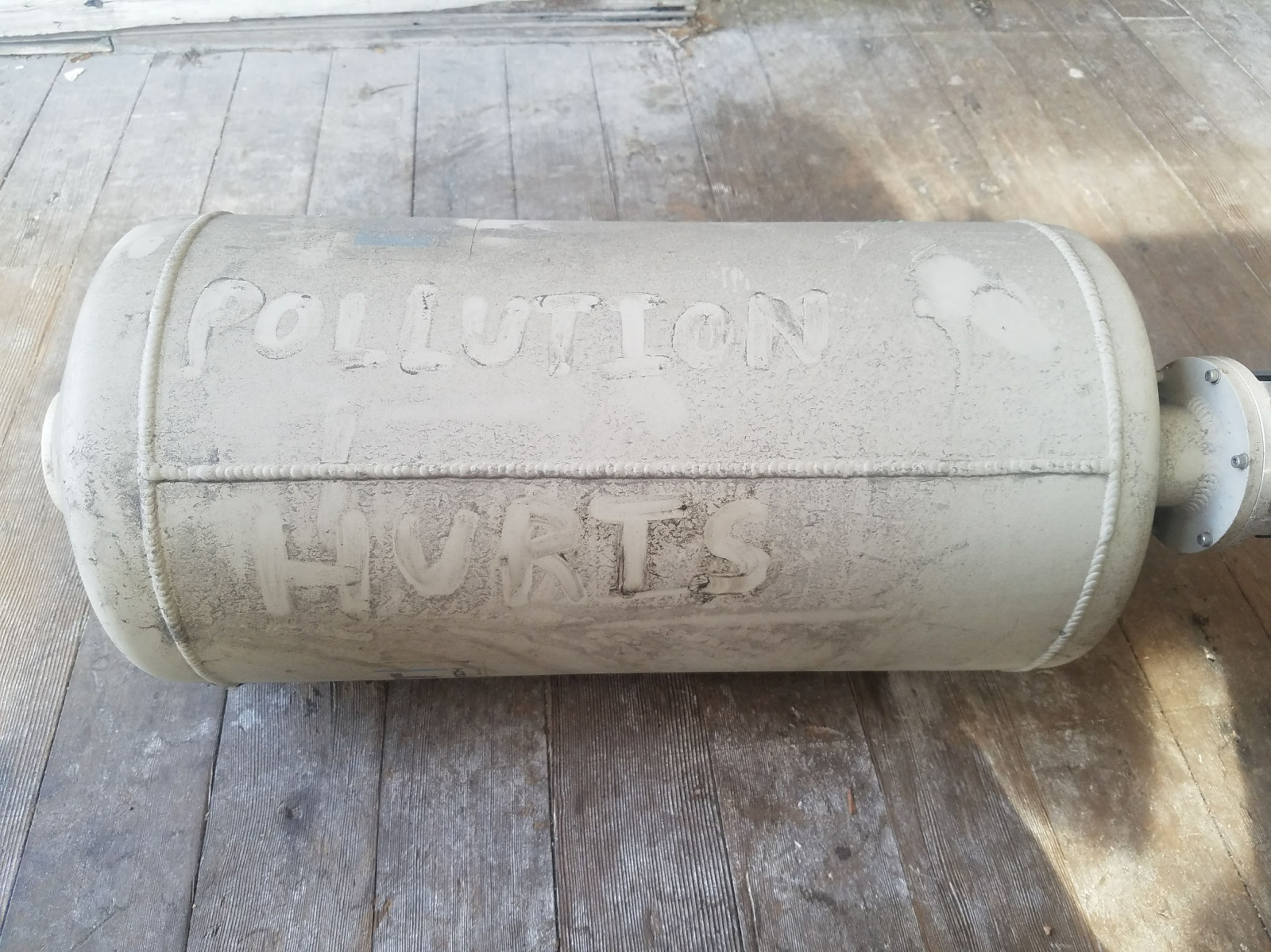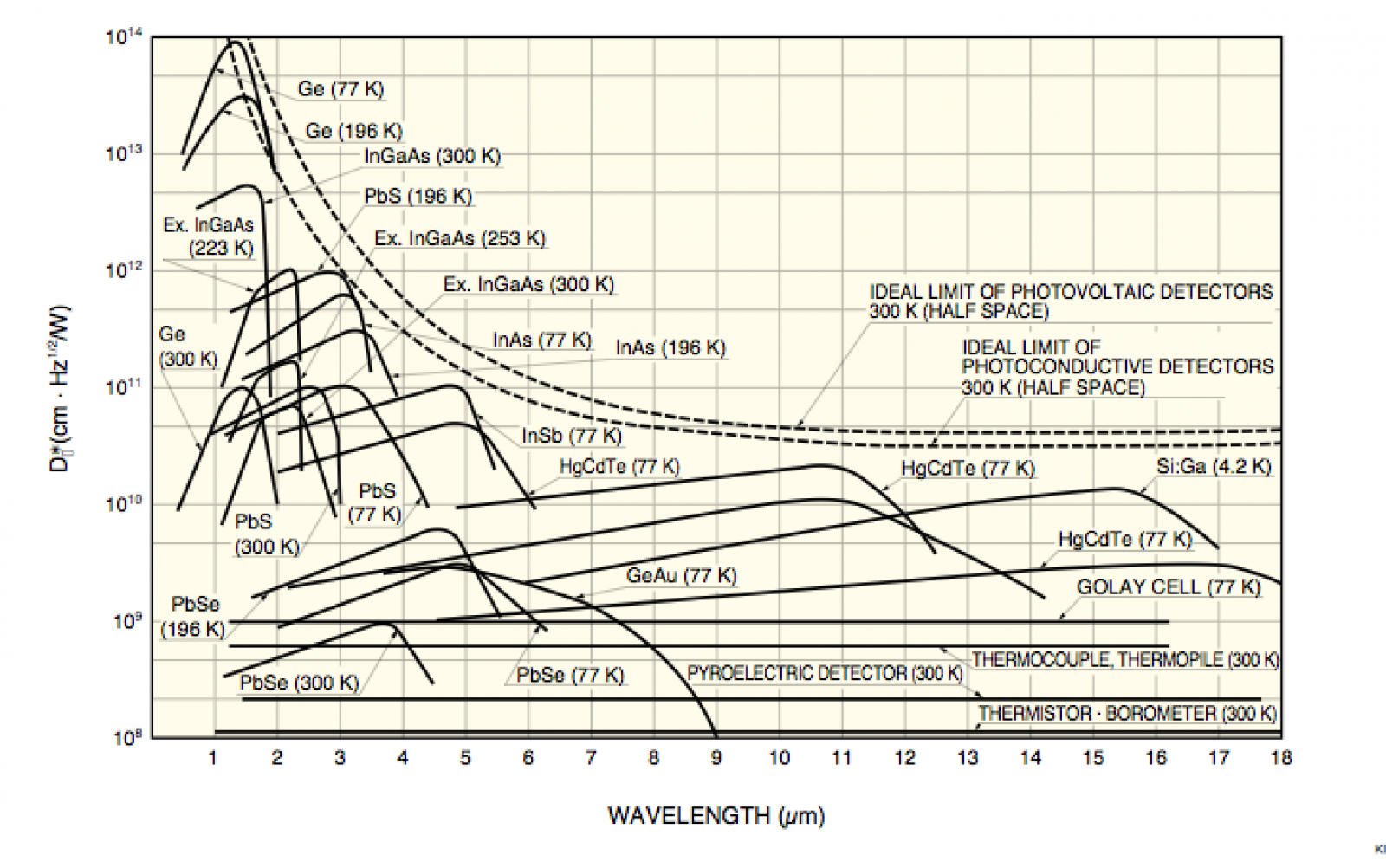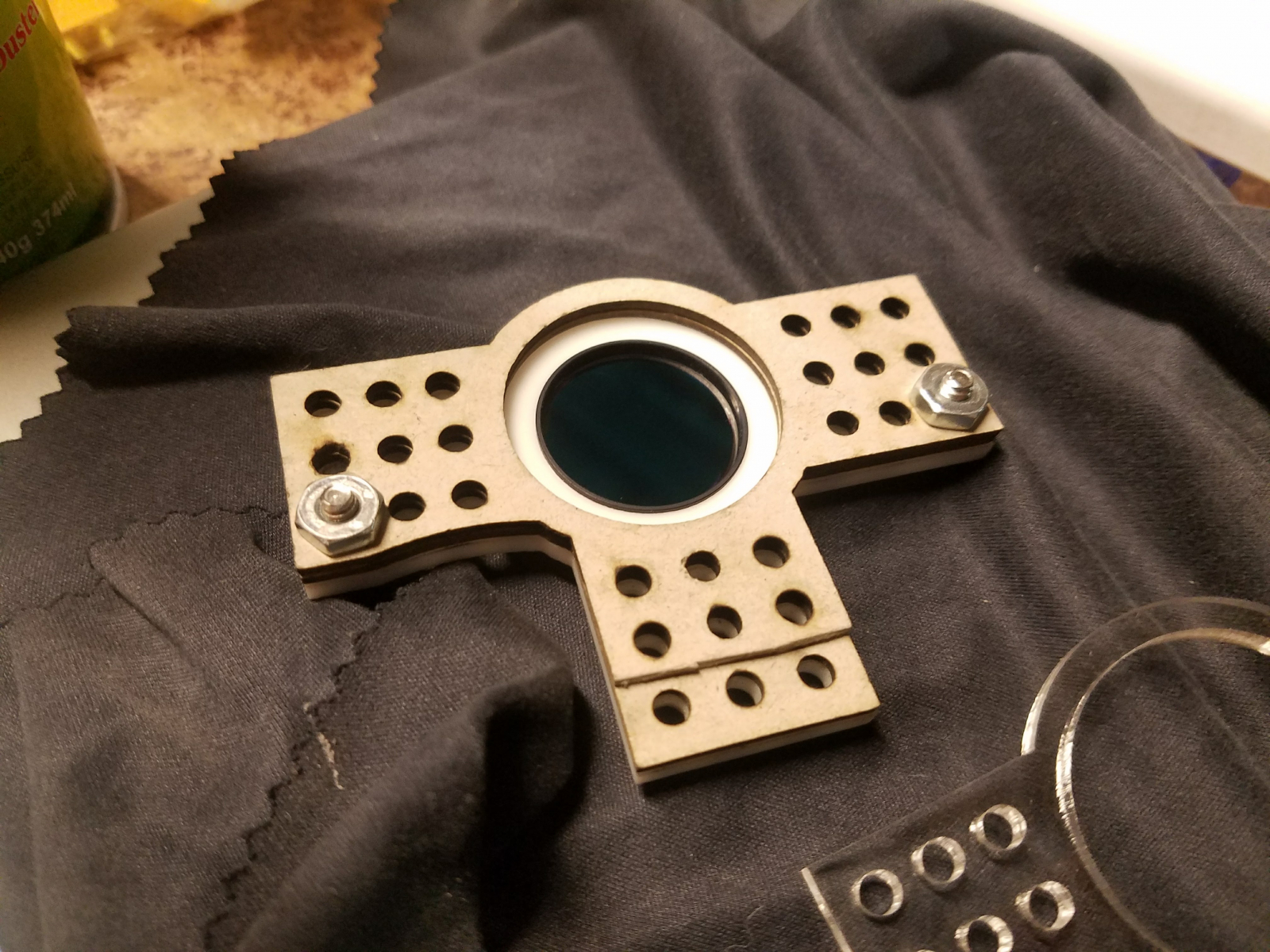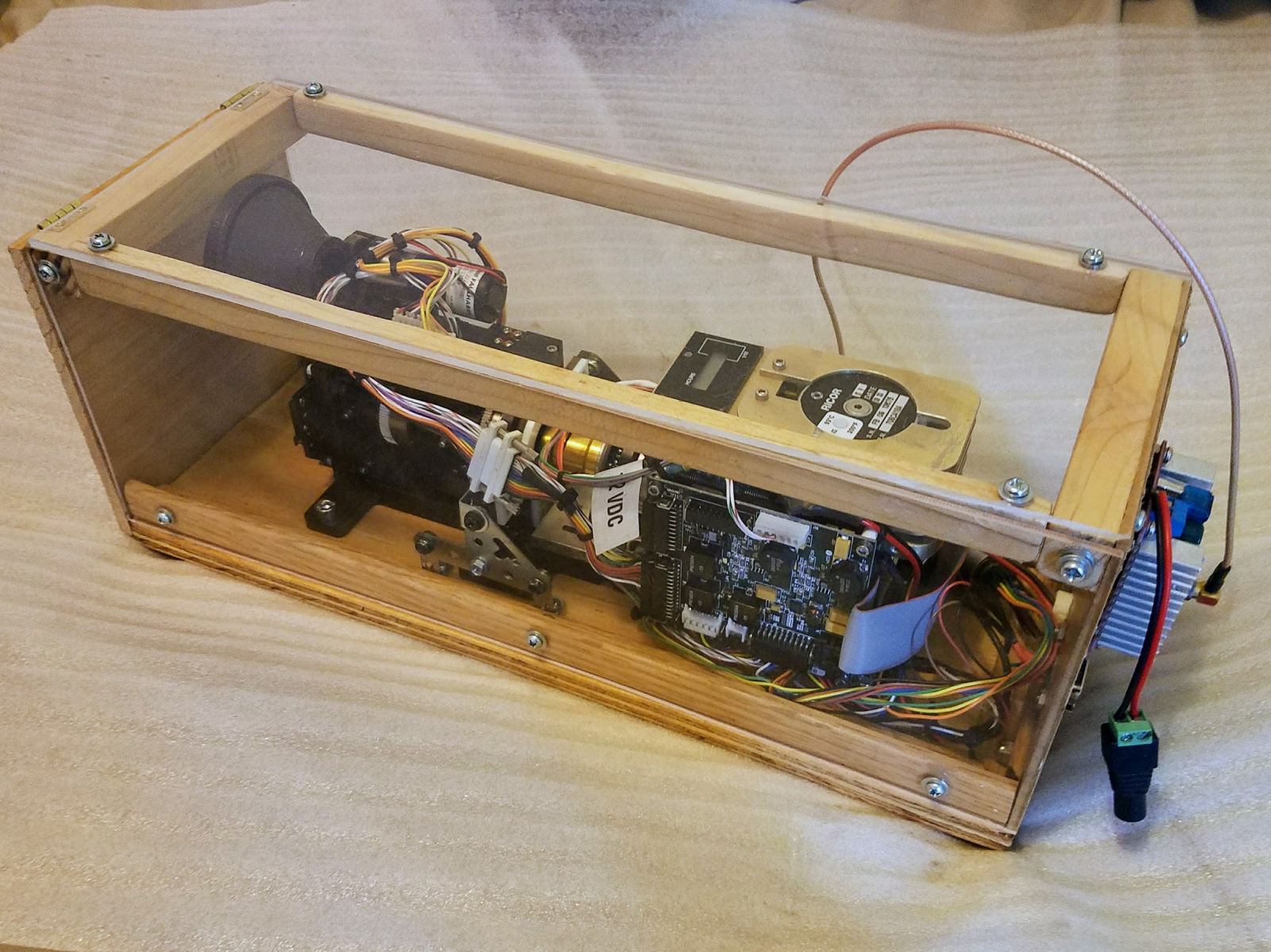Greenhouse Gas Camera
A camera that captures video footage of CO2, NOx, SO2 and other gas emissions from from vehicles, power plants, gas flares, would be pretty cool. Let's make one!
 Every container ship that passes into the port of Oakland releases enormous amounts of carbon dioxide and soot into the air. A significant percentage of U.S. imports are delivered on these ships, but the pollution has health consequences. I set out to build pollution-sensitive cameras to help spread awareness of the impact that this pollution is having.
Every container ship that passes into the port of Oakland releases enormous amounts of carbon dioxide and soot into the air. A significant percentage of U.S. imports are delivered on these ships, but the pollution has health consequences. I set out to build pollution-sensitive cameras to help spread awareness of the impact that this pollution is having.
 Some viable candidates for 4 micrometer light are InSb, HgCdTe, and PbSe...very toxic materials. Fortunately, we don't need to eat them. InSb is by far the most common material used for this, so we will have the best luck looking for an InSb "focal plane array" camera.Now 4 micrometers is very far into the infrared, so much so, that everything that's warm emits light at 4 micrometers, including cameras themselves! This means that in order to see anything, your camera must be cooled so that the sensor itself does not emit any light. Keeping the sensor inside a vacuum vessel is the easiest way to reach low temperatures, since vacuum is a great insulator.
Some viable candidates for 4 micrometer light are InSb, HgCdTe, and PbSe...very toxic materials. Fortunately, we don't need to eat them. InSb is by far the most common material used for this, so we will have the best luck looking for an InSb "focal plane array" camera.Now 4 micrometers is very far into the infrared, so much so, that everything that's warm emits light at 4 micrometers, including cameras themselves! This means that in order to see anything, your camera must be cooled so that the sensor itself does not emit any light. Keeping the sensor inside a vacuum vessel is the easiest way to reach low temperatures, since vacuum is a great insulator.  The "cold finger" depicted in this photo is usually the business end of a Stirling engine cryo-cooler, which uses high pressure helium to extract energy out of the sensor and bring it down to liquid-nitrogen temperatures.
The "cold finger" depicted in this photo is usually the business end of a Stirling engine cryo-cooler, which uses high pressure helium to extract energy out of the sensor and bring it down to liquid-nitrogen temperatures. Naturally it may come with no information, and it's up to you to figure out which of the jumble of wires are power wires, video wires, serial communication wires and the like. You can usually do this by process of elimination and careful examination of the circuit board (for example, ground and power usually go directly to some big capacitors). In this case, I was able to find out what the wires of interest were fairly easily, and was greeted shortly after with some grainy composite video, in which I was able to see my breath.
Clearly there is some hope here! It does look like there is going to be a lot of work to do, to get to a cinema quality video though.
Naturally it may come with no information, and it's up to you to figure out which of the jumble of wires are power wires, video wires, serial communication wires and the like. You can usually do this by process of elimination and careful examination of the circuit board (for example, ground and power usually go directly to some big capacitors). In this case, I was able to find out what the wires of interest were fairly easily, and was greeted shortly after with some grainy composite video, in which I was able to see my breath.
Clearly there is some hope here! It does look like there is going to be a lot of work to do, to get to a cinema quality video though. We need to insert this filter into the path of the camera and keep it held very still so that it won't move. It is important to keep it held in the same place, because this filter will introduce irregularities in the picture which the camera will need to calibrate out, and if it moves, these irregularities move also. I laser cut a holder out of plastic and paper for this filter, so that it can be held in place with neodymium magnets and carefully installed meccano set pieces.
We need to insert this filter into the path of the camera and keep it held very still so that it won't move. It is important to keep it held in the same place, because this filter will introduce irregularities in the picture which the camera will need to calibrate out, and if it moves, these irregularities move also. I laser cut a holder out of plastic and paper for this filter, so that it can be held in place with neodymium magnets and carefully installed meccano set pieces.  This assembly holds the filter flat against the rear of the camera's lens mount, but spaced just far enough from the dewar's germanium window and the rear of the lens such as to not scratch either of them. It scares me every time I insert it, as doing so risks damaging these optics!To further prevent damage, I built a wooden and acrylic frame with a door to keep out dust, as dust is the worst enemy to a camera like this and needs to be avoided at all costs. There's not very many ways to get dust out of optics. Prevention is the best cure!
This assembly holds the filter flat against the rear of the camera's lens mount, but spaced just far enough from the dewar's germanium window and the rear of the lens such as to not scratch either of them. It scares me every time I insert it, as doing so risks damaging these optics!To further prevent damage, I built a wooden and acrylic frame with a door to keep out dust, as dust is the worst enemy to a camera like this and needs to be avoided at all costs. There's not very many ways to get dust out of optics. Prevention is the best cure! I suspect that the video can be greatly enhanced with post processing of the stream using OpenCV on a linux computer, to enhance the video contrast and eliminate the dead pixels with a calibration map and nearest-neighbor interpolation. I also have a suspicion that a wider-band spectral filter can improve the image too, but it's not clear yet how wide you can go before you lose the ability to see only CO2.
I suspect that the video can be greatly enhanced with post processing of the stream using OpenCV on a linux computer, to enhance the video contrast and eliminate the dead pixels with a calibration map and nearest-neighbor interpolation. I also have a suspicion that a wider-band spectral filter can improve the image too, but it's not clear yet how wide you can go before you lose the ability to see only CO2.

Inspiration
This liquid nitrogen tank was left outside in our backyard for a few months. It was on a concrete slab, far away from any dirt or dust.
How It Works
You can't see fuel emissions, which obscures our understanding of them. But, CO2 absorbs light at a very specific wavelength (4.26 micrometers), so with a camera that is sensitive to this type of infrared light, and a filter designed to specifically block out all light except 4.26um, we will be able to see CO2 emissions.
How do we see this forbidden light?
There are a number of ways to see infrared light, but most often you need an exotic material that's not silicon, as silicon's band gap energy is way too large for an infrared photon to overcome. All of the common infrared detector technologies are shown here on this handy chart.

Where's the video?
It is very fortunate that in the early 2000s, digital video was not common place. This means that most video equipment, including these MWIR cameras, used composite video that has no DRM or vendor-specific protections that prevent you from using it. A camera from this era is easy to get working.
Filtering out everything but CO2
Nearly everything room-temperature emits light at 4 micrometers, gasses included. This is why my breath on the video above was white --it was hot, and emitting light. This isn't what we are trying to see though, as we are interested only in seeing CO2.Since CO2 has very strong absorbance at 4.26 mircometers, if we were to include a filter in the camera's optical path that only passes this wavelength then we will be able to see "blackness" where there is CO2 gas, since it will absorb all the 4.26um light. An optics company Thorlabs, sells filters that do this (FB4260-105).

